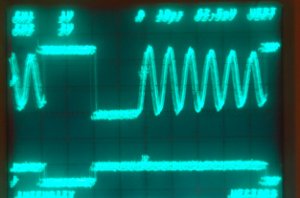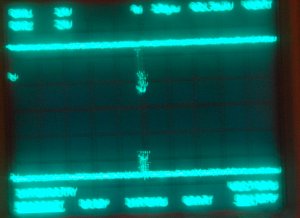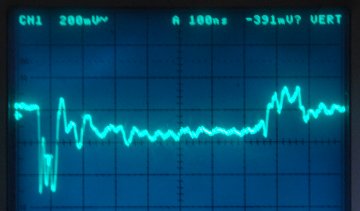g7pvs
Newbie level 4

I'm trying to make a -12V supply as part of a radio club project I'm working on (antenna analyser). As we have loads of lm3524n chips available I'm trying to use one for producing the -12V.
I'm using the circuit from figure 11, page 12 of the national datasheet for the LM2524D/LM3524D. www.national.com/ds/LM/LM2524D.pdf
The components I'm using are:
Rf = 30k
Fosc = 10kHz
Rt=10k
Ct=10nF
L1=47mH ( 154 ohm internal resistance)
Co=47uF
R1=100R
R2=1k
Io should be up to 31mA
delta Vo = 0.03V
Q1 = BC327
D1 = 1N4148
The measured Vo is -12.04V with no load or a load of 10k ohms, however if I try to draw more current the output voltage collapses.
I've looked at the junction of Q1,D1 and L1 with an oscilloscope and I get approx 12V for 20uS, approx -12V for 20uS then sinewave for 45uS (approx 5 full waveforms), then repeated when no load is applied.
With 10k ohm load I get approx 12V for 40uS, approx -12V for 33uS then sinewave for 12uS (approx 1 full waveform), then repeated.
I've not worked with switch mode power supplies before, so am unsure as to what I've done wrong. Any help would be appreciated.
Best Regards
Trev
I'm using the circuit from figure 11, page 12 of the national datasheet for the LM2524D/LM3524D. www.national.com/ds/LM/LM2524D.pdf
The components I'm using are:
Rf = 30k
Fosc = 10kHz
Rt=10k
Ct=10nF
L1=47mH ( 154 ohm internal resistance)
Co=47uF
R1=100R
R2=1k
Io should be up to 31mA
delta Vo = 0.03V
Q1 = BC327
D1 = 1N4148
The measured Vo is -12.04V with no load or a load of 10k ohms, however if I try to draw more current the output voltage collapses.
I've looked at the junction of Q1,D1 and L1 with an oscilloscope and I get approx 12V for 20uS, approx -12V for 20uS then sinewave for 45uS (approx 5 full waveforms), then repeated when no load is applied.
With 10k ohm load I get approx 12V for 40uS, approx -12V for 33uS then sinewave for 12uS (approx 1 full waveform), then repeated.
I've not worked with switch mode power supplies before, so am unsure as to what I've done wrong. Any help would be appreciated.
Best Regards
Trev





